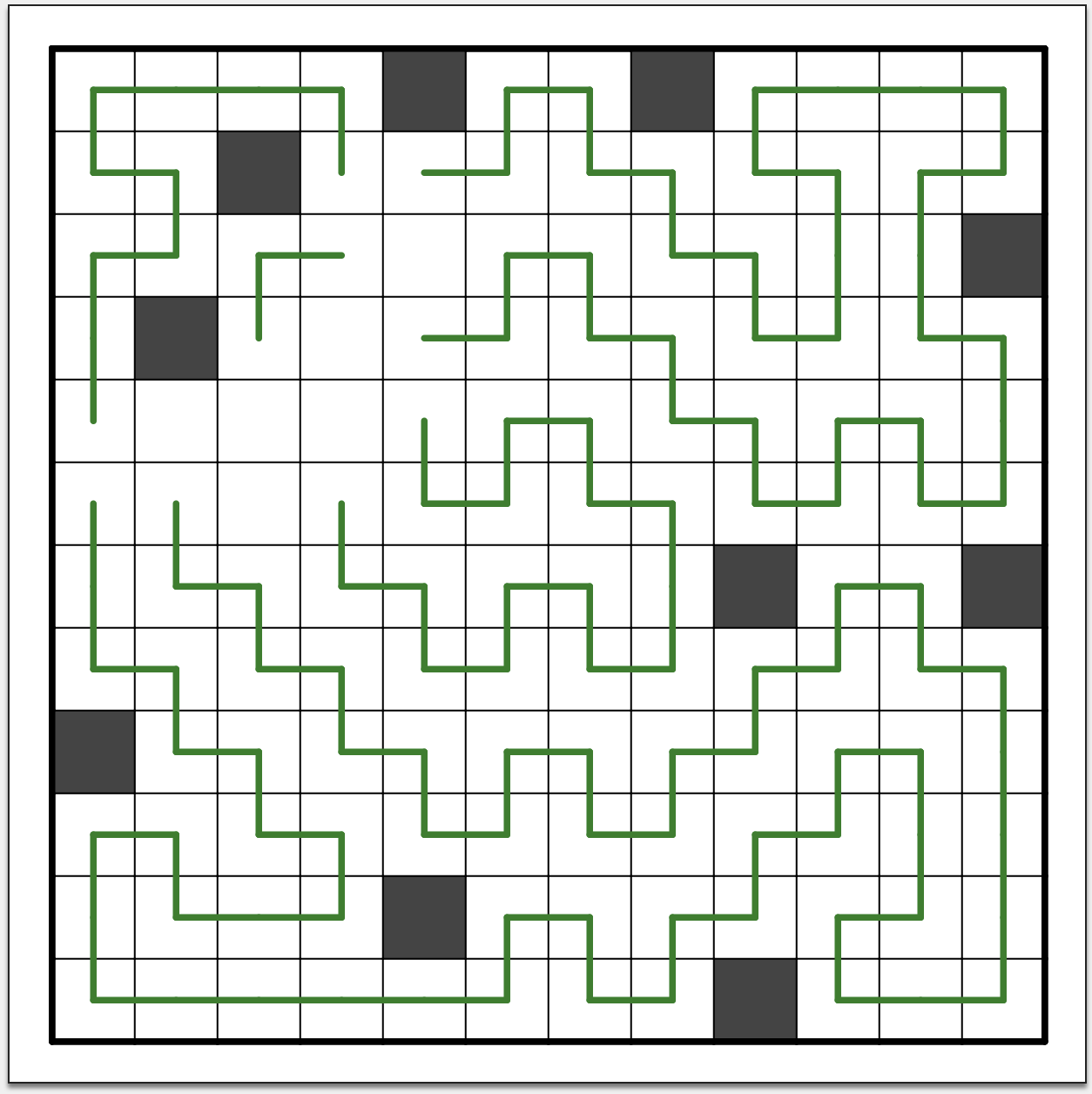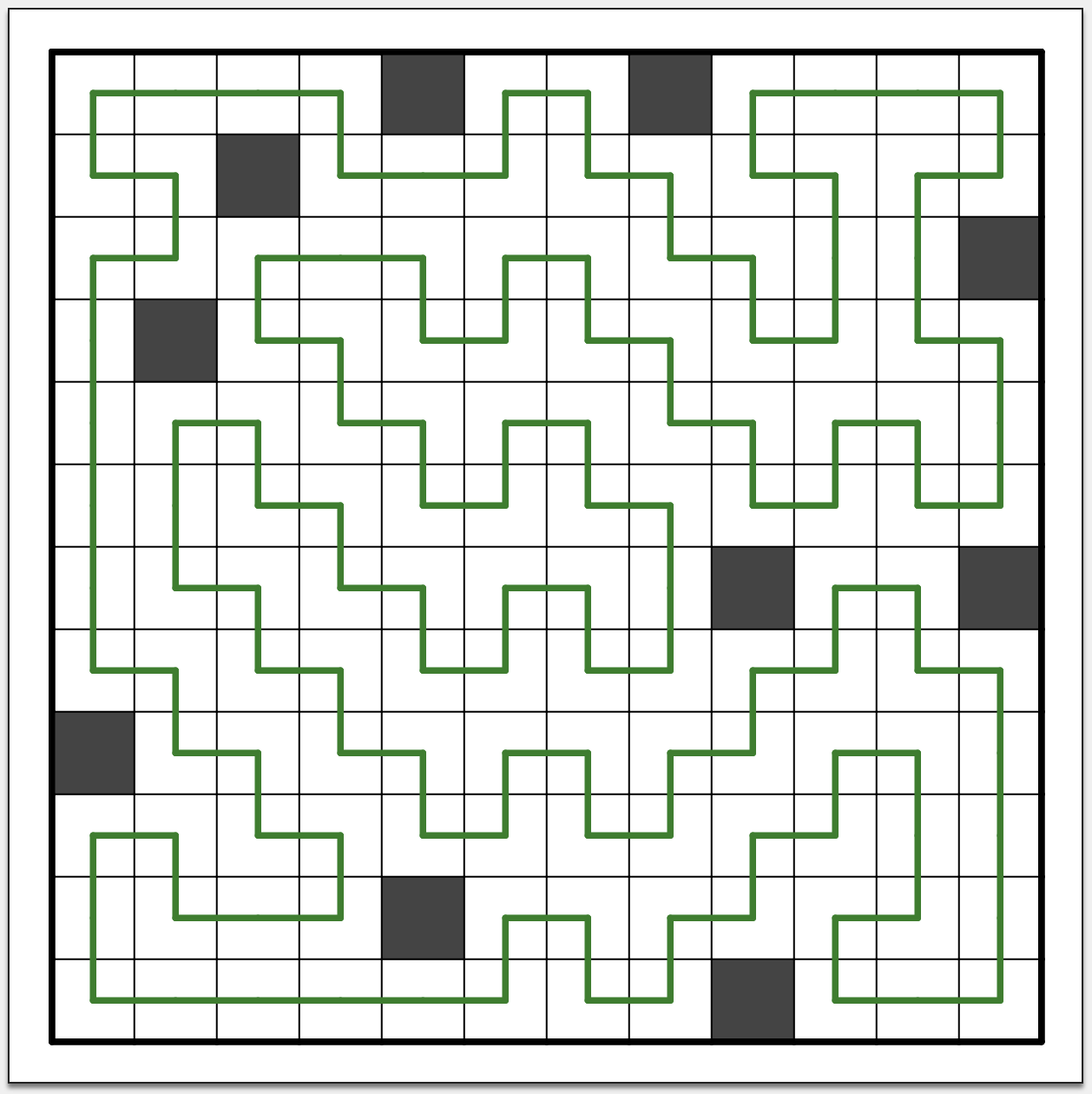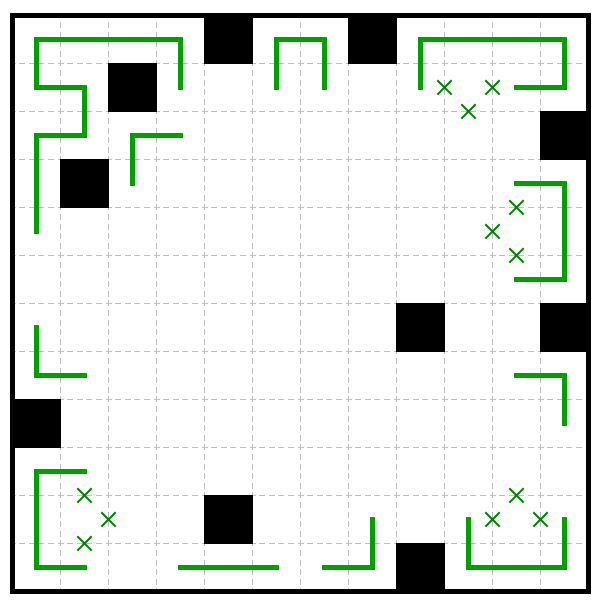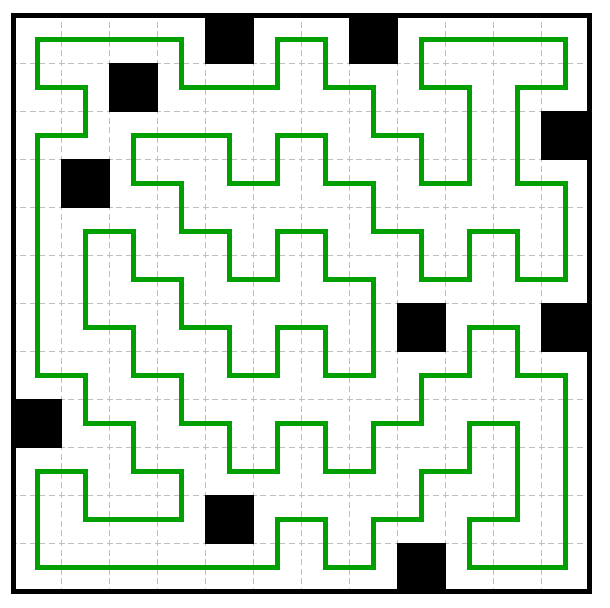Solution with a solve path (Solve it yourself on Penpa+)
Let's construct some rules to help us solve.
- Corner rule: in the following configuration, where
* denotes no connection and denotes an unknown connection
B
X * A C
*
Y
then the cells ("in the corner") must be connected, so you can draw the two line segments B-A and A-C, giving
B
|
X * A - C
*
Y
Applying the corner rule and easy logic to the starting position gets us
(1)

The bottom left can only be resolved like this. Use the corner rule as well.
(2)

Invalid configuration rule: if there is a cell only reachable from one neighbour, then we have an invalid configuration.
Short loop avoidance rule: in the following configuration
B
X A C
*
Y
where X and C belong to the same short loop, we cannot have X-A and A-C. Therefore B-A is connected (to avoid triggering the invalid configuration rule). So
B
|
X A C
*
Y
Using this, we can make some deductions.
(3) (The red segment leads to a quick contradiction and must be removed)

(4)

Connecting the red line leads to a contradiction in the top right after around 10 moves (see the comments under the other answer for a more elegant method). So we have
(5)

Connecting the red line leads to a contradiction in the middle right after around 11 moves. So we have
(6)

Connecting some obvious things (starting from the bottom) leads to
(7)

Avoiding a big loop on the left leads to the solution
(8)












 The squares surrounded by three crosses have three possibilities for the loop, but for each square one of those possibilities makes a short loop and the other two share a common edge. We can fill in those common edges:
The squares surrounded by three crosses have three possibilities for the loop, but for each square one of those possibilities makes a short loop and the other two share a common edge. We can fill in those common edges:
 Repeat this line of reasoning, remembering to always put forced edges after an assumption to see if a contradiction arises. Then we can positively fill in some more edges:
Repeat this line of reasoning, remembering to always put forced edges after an assumption to see if a contradiction arises. Then we can positively fill in some more edges:
 The puzzle now essentially solves itself through zigzags (diagonal lines of squares with only two vacant neighbours).
The puzzle now essentially solves itself through zigzags (diagonal lines of squares with only two vacant neighbours).
 These pictures were made on
These pictures were made on